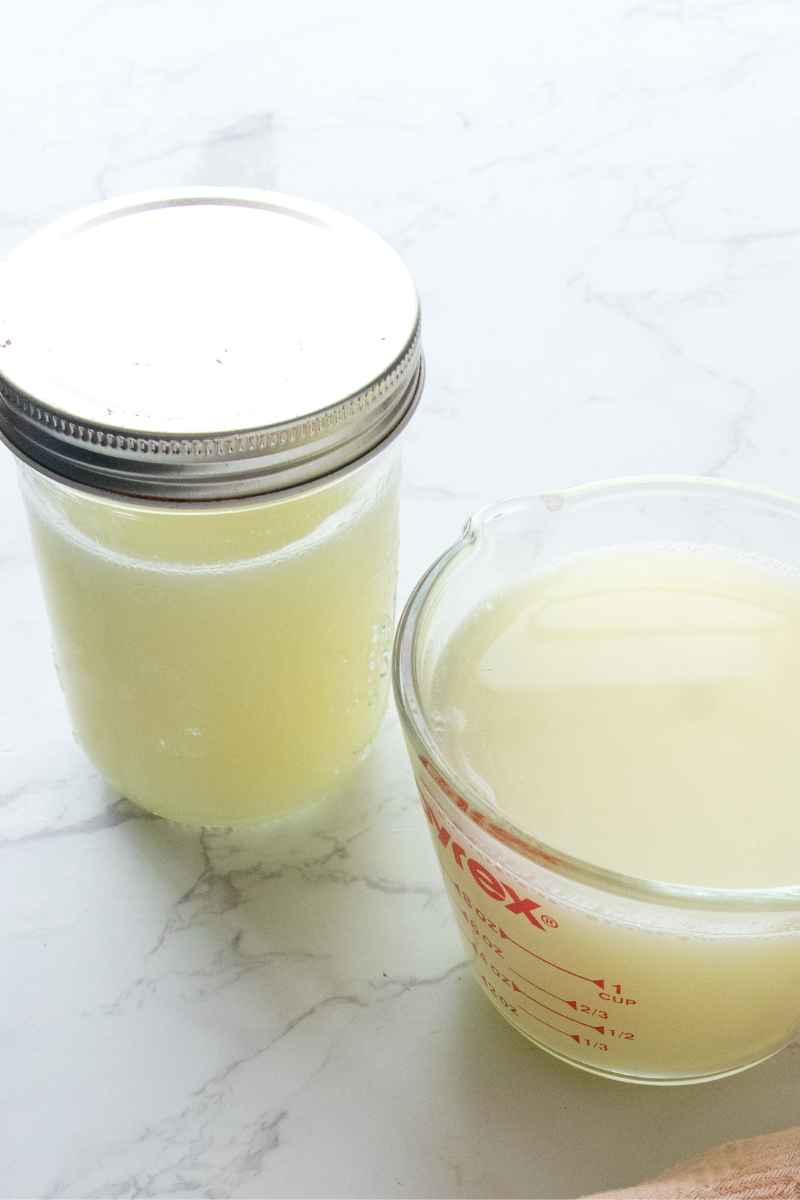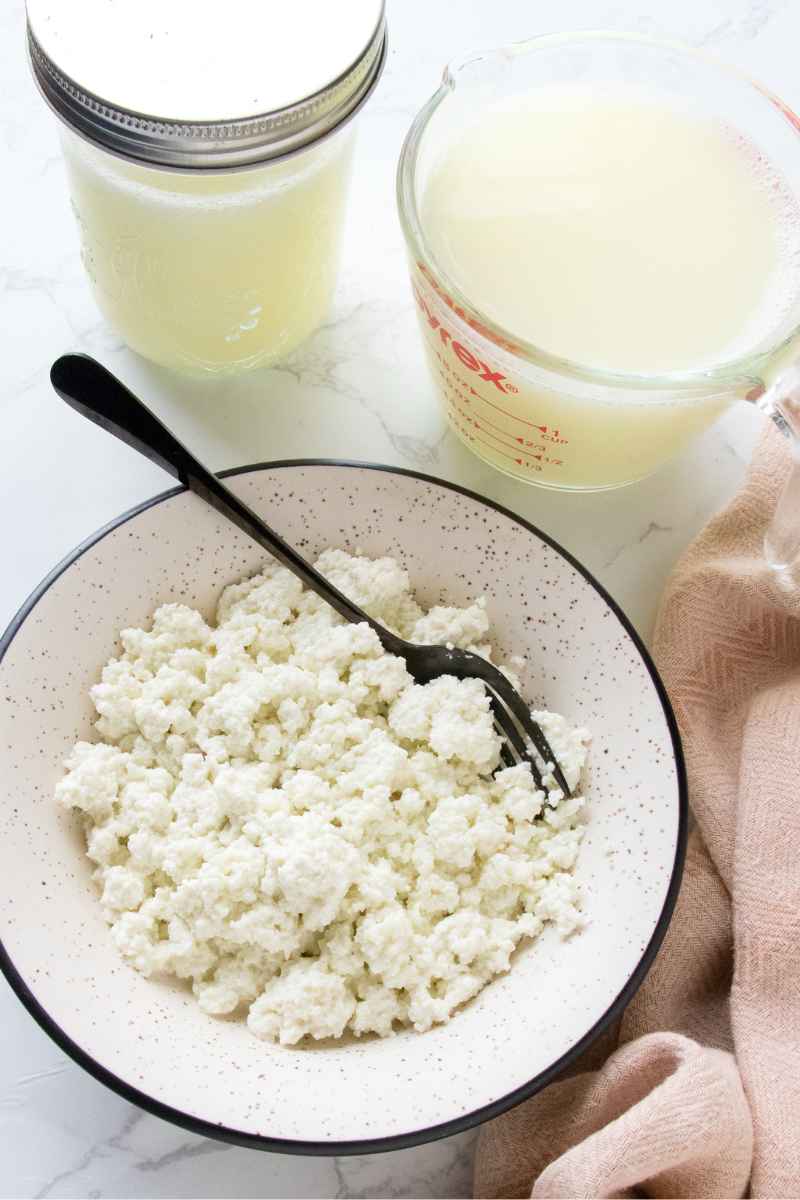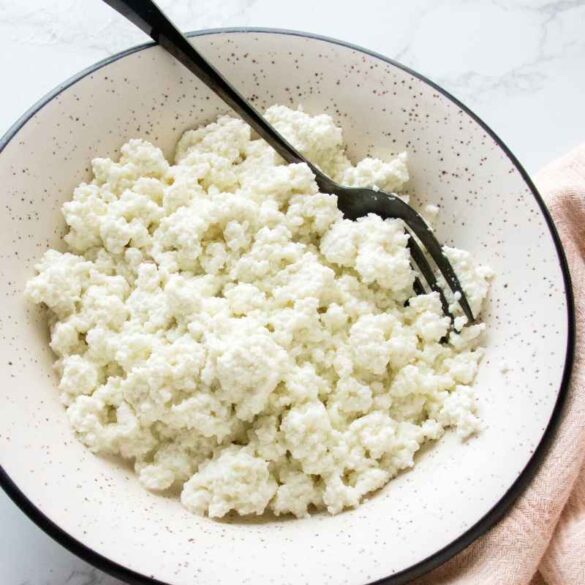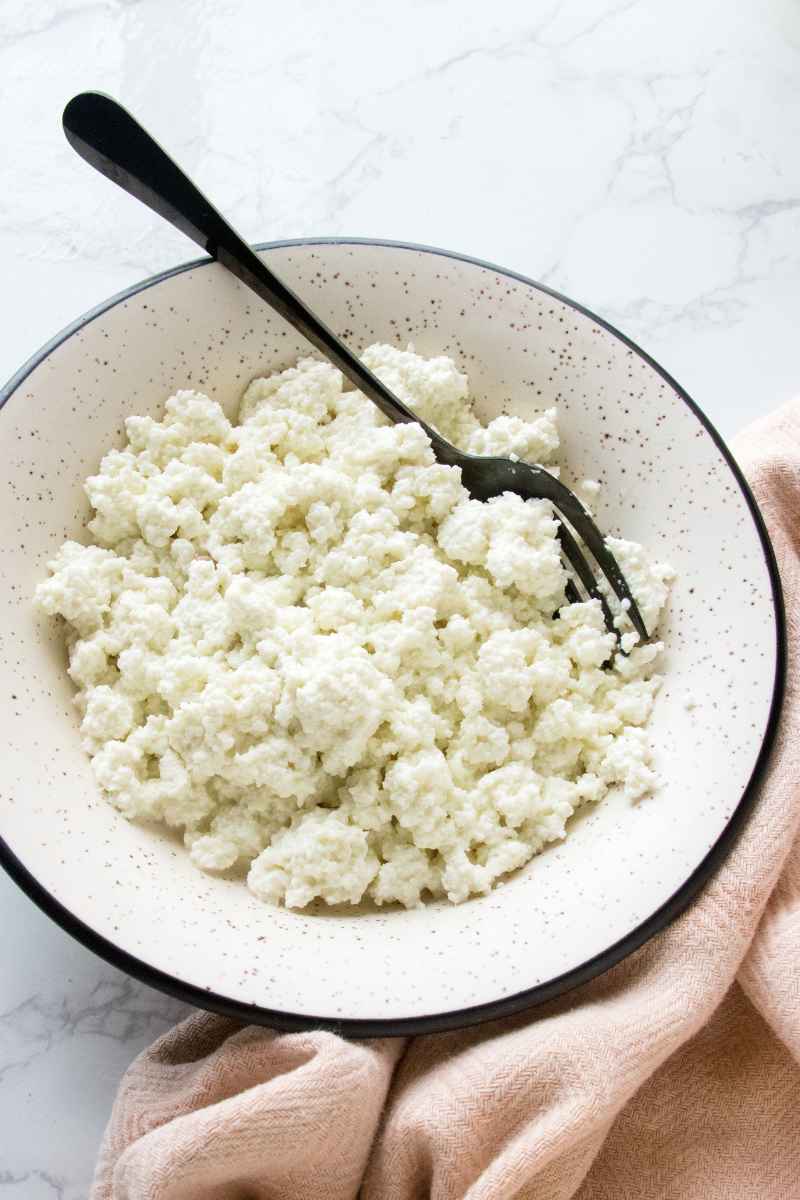Paneer or Cottage cheese is one of the most popular food items in an Indian kitchen. The soft and creamy texture of paneer can add soul to any bland dish. It is one of the most versatile food items that are not only delicious but also extremely healthy and can be prepared at home. Why go for the processed store-bought cottage cheese, when you can make cottage cheese at home easily anytime without much effort or prior preparation? Just follow the easy steps and make it at home!
See the full recipe card at the bottom of this post to print the directions – Best & Easiest Ways to make Cottage Cheese at Home!
It is not surprising that cottage cheese or paneer is one of the most popular milk products and is quite a common ingredient in Indian cuisine. There are a variety of paneer dishes that are very popular such as paneer makhani, chili paneer, kadhai paneer, and paneer masala. The nutritional value of paneer depends upon the type of milk used to make it.
Traditionally, cottage cheese is prepared by curdling milk with lemon juice. But when you run out of a lemon or you forget to stock it up, it seems like a task to curdle milk without lemons juice. Not many would have been aware that cottage cheese can be made at home with some easy methods, even if you do not have lemon at home. Cottage cheese can be made by any acidic agent like citric acid, vinegar, curd or yogurt, and even with buttermilk.
So, how can you make perfectly creamy cottage cheese at home without using lemon juice?
METHOD 1: COTTAGE CHEESE USING VINEGAR
If you do not have lemons at home and have some white vinegar instead, you can make paneer at home.
- Pour the milk into a large vessel and boil it at medium flame. Stir occasionally, let it boil.
- As soon as the milk is done, pour vinegar while stirring continuously. Make sure that the milk curdles instantly, if it does not happen then you can add an additional 1 tbsp vinegar into it.
- Let the curdled milk stand still for 15 minutes. Then take a large strainer covered with cheesecloth over it. Strain the curdled milk over the cheesecloth and rinse it with cold water to remove excess vinegar from it.
- Washing it with cold water will help cool it down immediately. You can then squeeze out any excess water.
- Twist the cloth and make sure to remove all the excess water from the cheese.
- Now place the cheese on a flat surface and keep some weight over it.
- Keep weight over the paneer for about 1 to 2 hours.
After that refrigerate the cottage cheese with a clean cheesecloth wrapped around it, use fresh paneer whenever you want to.
Now the delicious homemade cottage cheese or paneer is ready!
Note: Do not dispose of the curdled milk water (whey), as it can be used to knead flour or to make chaach with some spices.

METHOD 2: COTTAGE CHEESE USING SOUR CURD
When you want your cottage cheese to be creamier or to make malia paneer you may try this method. To make paneer using curd, make sure to use the sour curd, the more acidic your curd is, the better your paneer will be.
- Put a large container on medium flame, add milk into it.
- Once the milk is boiling, add ½ cup of sour curd to it. Stir it and make sure everything is combined well. Let you milk curdle.
- After a few minutes, you will see the milk is split into cheese curd. Let it simmer for another 5 to 8 minutes, and switch off the flame. Let it sit for 5 minutes.
- Then using cheesecloth and a strainer, strain the excess whey and collect the paneer. Keep aside the whey and squeeze the excess whey from the paneer. Now hang it from a tap and when it is fully dried, store it in the refrigerator.

METHOD 3: COTTAGE CHEESE USING CITRIC ACID
Citric acid accelerates the curdling process of the milk and it is usually used by the stores to prepare paneer quickly. If you are using citric acid to make paneer, make sure to use a little amount of it.
-
- Similar to other methods, pour milk into a large vessel, turn the flame to medium. Once it comes to a boil, add ½ tbsp of citric acid and stir it well.
- Let it simmer for few more minutes and then turn the flame off.
- Now strain the whey using a muslin cloth or a cheesecloth and a strainer. Squeeze the paneer to remove excess whey.
- Make sure to wash the cheese with ice-cold water or under running water to get rid of the acid, this will remove the acidic taste.
- Refrigerate it, use it when required.

Ingredients
- 1-liter whole milk
- 1 tbsp vinegar or
- ½ cup sour curd or
- ½ tbsp citric acid
Instructions
METHOD 1: COTTAGE CHEESE USING VINEGAR
-
Pour the milk into a large vessel and boil it at medium flame. As soon as the milk is done, pour vinegar while stirring it continuously. Make sure that the milk curdles instantly, if it does not happen then you can add an additional 1 tbsp vinegar into it.
-
Let it sit for around 10 to 15 minutes, then take a strainer covered with cheesecloth over it. Strain the curdled milk over the cheesecloth, rinse with cold water to get rid of excess vinegar from it.
-
Twist the cloth and make sure to remove all the excess water from the cheese. Now place the cheese on a flat surface and keep some weight over it for around 1 to 1½ hours.
METHOD 2: COTTAGE CHEESE USING SOUR CURD
-
Pour the milk into a large vessel and boil it at medium flame. Once the milk is boiled, add ½ cup of cour curd into it. Stir it and make sure everything is combined well. Let you milk curdle.
-
After some time you will notice the milk will split into cheese curd, let it simmer for another 5 to 8 minutes. Then switch off the flame and let it sit for another 5 minutes.
-
Then using cheesecloth and a strainer, strain the excess whey and collect the cottage cheese. Now hang it from a tap and when it is fully dried, store it in the refrigerator.
METHOD 3: COTTAGE CHEESE USING CITRIC ACID
-
Pour milk into a large vessel, turn the flame to medium. Once it comes to a boil, add ½ tbsp of citric acid and stir it well.
-
Let it simmer for few more minutes and then turn the flame off. Now strain the whey using a muslin cloth or a cheesecloth and a strainer. Squeeze the paneer to remove excess whey.
-
Make sure to wash the cheese with ice-cold water or under running water to get rid of the acid, this will remove the acidic taste.
Notes
- Use Sour curd as the curdling agent if you want your cottage cheese to be creamier.
- Try to use full cream milk and not the lite milk or skim milk, Because more fat within the milk would yield more curdling and a thick block of paneer.
- Make sure to rinse the curdled milk properly, to remove the acidic traces.
FAQ
Most frequent questions and answers
How many calories are in cottage cheese?
Cottage cheese is high in protein. One cup of low-fat cottage cheese has a whopping 28 grams (g) and only 163 calories. Here is some detailed nutritional information on homemade cottage cheese.
Is Cottage Cheese Keto-friendly?
Full-fat cottage cheese can have a place in the keto diet. The type of cottage cheese you choose matters. You want to keep fat content in mind and skip on any added sugar and flavors.
Is cottage cheese healthier than regular cheese?
Cottage cheese is always considered healthier as it contains more amount of casein protein as compared to cheddar cheese.
Is it okay to eat cottage cheese every day?
Cottage cheese is a good source of some vitamins and minerals, but if you only eat cottage cheese throughout the day, you won’t get the RDI of all the nutrients your body needs to function well. Here are some pros and cons of the cottage cheese diet.
